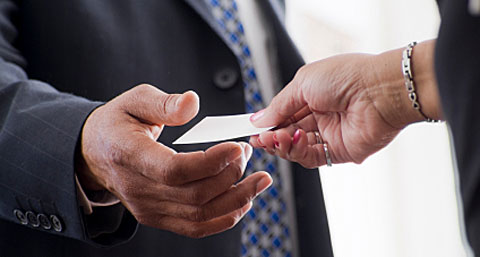 The United States really didn’t understand what coffee could taste like. Coffee grinds were flavored with chips for a long time that helped maximize the profits of coffee companies. I had a friend of mine that worked in a packaging plant who worked on the equipment that filled and sealed coffee containers. He told me they changed brands all night, but never changed the beans. We were all getting fed the same crap, disguised in different coffee cans.
The United States really didn’t understand what coffee could taste like. Coffee grinds were flavored with chips for a long time that helped maximize the profits of coffee companies. I had a friend of mine that worked in a packaging plant who worked on the equipment that filled and sealed coffee containers. He told me they changed brands all night, but never changed the beans. We were all getting fed the same crap, disguised in different coffee cans.
Then Came Great Coffee
About the time I started to pay attention to how my coffee tasted was about the time I found the Norfolk Coffee & Tea Company. To this day I’ll tell you that there’s nothing quite like getting fresh roasted beans directly from the oven.
If you’re imagining it as some new wave, modern place for coffee snobs to meet and hobnob, you couldn’t be further from the truth. The inside looked like an abused factory… there was a coating of coffee and peanut dust on everything you looked at. You simply walked in, ordered your bag of grounds, and walked out. I have no idea where the beans came from, but they were terrific. The owners taught me about the new coffee makers that were out with no burners and insulated carafes. No burnt coffee. Mmmm.
Then Came Starbucks
About this time, I moved to Denver and left my new found discovery behind. In Denver, I searched for some coffee roasters but it just wasn’t the same. Starbucks had come to town, though, and I got a flavor for the burnt beans of the ‘bucks. I don’t think I ever got used to the cost or taste of those beans, though! I was spending 10 times the money on coffee than I used to!
I did enjoy the stores. I loved sitting down, logging onto the wireless (before they were charging for it), and getting some work done. They played cool music there (before they were selling it).
Then Came Hard Seats
Hanging out at Starbucks when they first opened was pretty sweet. Comfy chairs throughout, making it a great place to hold the impromptu meeting. The comfy chairs invited people to spend more time at Starbucks, though. I’ve read that many retail establishments put in hard seats so people won’t stay as long. Starbucks switched to larger stores and hard chairs with a comfy seat nary around.
Then Came the Auto-Shots
I remember the great signs greeting you at the ‘bucks:
Your Barista is Jane
Jane may have a splash of green hair and a couple piercings in odd places, but as she pulled a shot, you watched as she practiced her craft. She’d discuss your likes and dislikes off the drink options and make a couple recommendations to you based on her wealth of experience. You felt cool just being there and being paid attention to. You felt special.
But the lines grew bigger and the assembly line had to grow more efficient. New machines were brought in that automatically ground, packed and poured the shot. The magic was gone… no imperfection, no shots that took too long, too short or had too many grounds. Worse yet, baristas lost their knowledge of the craft. Barista’s were no less artists than someone flipping a burger at the local Burger King.
Then Came the Retail
As you stood in line, you were now surrounded by bags of beans, cups, mugs, insulated containers, chocolates, coffee makers, espresso machines, music CDs, newspapers… The store was starting to look more like a store than a third place, the place away from home and work where I wanted to spend time.
Then Came the Drive-Throughs
The lines were too long to carry on a conversation. The baristas were too busy to get to know you. Shifts of new baristas came and went, the “Your Barista is” was left blank. To fight the lines, the drive-through was installed. It’s more convenient. It’s faster. Bigger profits. More customers.
There was no option of a taste of the out of ordinary tailored to your fancy. Just the typical recommended drink of the day or an upsell to a coffee cake.
No thanks. Non-fat, no-whip, grande mocha please.
Eight dollars, drive around.
I’d listen to the radio as I’d pull around and hand them my cash and head for work. No greetings, no discussion of the weather. Just me and my car. The magic was gone. Starbucks, the experience as I had known it, had died.
The truth was that I don’t know that I was ever really in Starbucks for the coffee. Oh - I needed my fix just like everyone else, but I was in love with the brand, the style, the personality of the coffee house. I loved going there because I felt important. And when I paid $5 for a specialty drink, I felt even more important.
Somewhere along the way, Starbucks began shaving off the special in turn for profits and efficiency. They stopped making me feel important. They stopped making me feel special. They stopped being special. Starbucks is an amazing story - they inflated the price of a common drink and got us all hooked. But they couldn’t keep us. Growth, profit and efficiency took over and eventually squashed everything out of the stores that was unique.
The irony is that Starbucks devalued itself, no one else did it. No competitor came in and challenged them. When Schultz came back in January, I had big hopes. Oh well.
Then Came the Discounts
Today, Starbucks began offering a $2 afternoon drink if you bring in a receipt from the morning. I stopped for lunch at Starbucks today and got my stamped receipt to come in later. I never did.
I think we’ve kind of hit the nail on the head, says Brad Stevens, vice president of customer relationship management. It’s easy for baristas to implement and it’s easy for customers to understand.
Easy. Yes, that’s the answer. I want to pay for easy.
IMHO, I think Starbucks has hit the final nail in the coffin. They’re no longer special enough to charge you $5 for a drink, they’re now resorting to discounting the single greatest product they touted. It’s a sad day for Starbucks.
Then Came the Private Coffee House
I’m writing this from my favorite coffee house in the world, The Bean Cup. Tonight, my barista Cassie put together a fantastic raspberry Italian soda for me based on a discussion of my likes and dislikes (that she knows pretty well). And Alayna made me a wonderful heated roast beef sandwich on a toasted bagel (not on the menu).
I wrote this entire post on the free wireless and sat part of the time in a big ol’ comfy swivel chair. Cassy and Alayna are chatting, by name, with the customers and pouring shots (and repouring them if they’re too long or too short), packing them carefully based on the humidity.
There’s such an important story in here for other companies. You simply can’t continue charging for “special” and then whittling away at everything that was special. Starbucks didn’t discount an afternoon coffee this afternoon, they devalued their brand even further.
It’s a sad day for Starbucks, but a great day for The Bean Cup. I never did go back and get that $2 drink this afternoon.












 More than 50 years of consumer research suggests that when dealing with product types that consumers really care about, there are at least 5 ways marketers can encourage customers to develop favorable attitudes toward their specific products. Whether you appeal to their imaginations, their values, their feelings, their analytical minds, or their need to belong, these tried-and-true tactics should serve you well. They've made the difference for a range of marketers over the years. Post this list next to your computer:
More than 50 years of consumer research suggests that when dealing with product types that consumers really care about, there are at least 5 ways marketers can encourage customers to develop favorable attitudes toward their specific products. Whether you appeal to their imaginations, their values, their feelings, their analytical minds, or their need to belong, these tried-and-true tactics should serve you well. They've made the difference for a range of marketers over the years. Post this list next to your computer:

 by Karlene Lukovitz
by Karlene Lukovitz  by Karl Greenberg
by Karl Greenberg 






 The United States really didn’t understand what coffee could taste like. Coffee grinds were flavored with chips for a long time that helped maximize the profits of coffee companies. I had a friend of mine that worked in a packaging plant who worked on the equipment that filled and sealed coffee containers. He told me they changed brands all night, but never changed the beans. We were all getting fed the same crap, disguised in different coffee cans.
The United States really didn’t understand what coffee could taste like. Coffee grinds were flavored with chips for a long time that helped maximize the profits of coffee companies. I had a friend of mine that worked in a packaging plant who worked on the equipment that filled and sealed coffee containers. He told me they changed brands all night, but never changed the beans. We were all getting fed the same crap, disguised in different coffee cans. The United States Olympic Committee and the Ad Council launched a multi-year PSA campaign focusing on teen steroid use that's funded by Johnson & Johnson. "Asterisk" features the star player of a high school team being congratulated by students, teachers and coaches. Jake has a pimple on his forehead that gets bigger and bigger throughout the ad, as people begin to look at him differently. By the end of the ad, the zit has morphed into an asterisk, branding Jake as a fraud. See the long and short versions of the ad
The United States Olympic Committee and the Ad Council launched a multi-year PSA campaign focusing on teen steroid use that's funded by Johnson & Johnson. "Asterisk" features the star player of a high school team being congratulated by students, teachers and coaches. Jake has a pimple on his forehead that gets bigger and bigger throughout the ad, as people begin to look at him differently. By the end of the ad, the zit has morphed into an asterisk, branding Jake as a fraud. See the long and short versions of the ad  adidas launched "Countdown," a TV spot running predominantly in Hong Kong with a touch of China included. The ad shows both athletes and the country as a whole, waiting with bated breath for the games to begin. No pressure on the athletes or anything.
adidas launched "Countdown," a TV spot running predominantly in Hong Kong with a touch of China included. The ad shows both athletes and the country as a whole, waiting with bated breath for the games to begin. No pressure on the athletes or anything.  adidas also launched a global print campaign called "Gold is not a Given," featuring sprinters Tyson Gay, Allyson Felix, Veronica Campbell-Brown and Jeremy Wariner, pole vaulter Yelena Isinbayeva and marathoner Haile Gebrselassie. These athletes flew to Beijing in February to familiarize themselves with the city and train in sub-zero temperatures. I won't run outdoors if it's below 40 degrees. Hence my day job and gym membership! Copy is different in each of the ads yet equally motivational. "Gold can be lost in a flash. Lost in the blink of an eye. Lost before the start of a race. Lost months before you step onto the track. Gold is never a given," reads the copy in Tyson Gay's ad, ironic for the sprinter, who's recovering from a hamstring injury. See the ads
adidas also launched a global print campaign called "Gold is not a Given," featuring sprinters Tyson Gay, Allyson Felix, Veronica Campbell-Brown and Jeremy Wariner, pole vaulter Yelena Isinbayeva and marathoner Haile Gebrselassie. These athletes flew to Beijing in February to familiarize themselves with the city and train in sub-zero temperatures. I won't run outdoors if it's below 40 degrees. Hence my day job and gym membership! Copy is different in each of the ads yet equally motivational. "Gold can be lost in a flash. Lost in the blink of an eye. Lost before the start of a race. Lost months before you step onto the track. Gold is never a given," reads the copy in Tyson Gay's ad, ironic for the sprinter, who's recovering from a hamstring injury. See the ads  Isn't Morgan Freeman in the hospital? The actor has been the voiceover for Visa's "Go World" TV campaign, and vocally appears in the latest ad that congratulates swimmer Michael Phelps for becoming the Olympian with the most gold medals (10 and counting), a feat just recently achieved. Good thing companies prepare for potential -- OK, probable -- milestones. "Congratulations, Phelps" aired following his win in the 200-meter butterfly and treats Phelps fans to still shots of his toned body in and out of the pool and closes with the image of Phelps celebrating the U.S. team's comeback from behind victory in the 4 x 100 meter freestyle relay. I had to go online and watch it again.
Isn't Morgan Freeman in the hospital? The actor has been the voiceover for Visa's "Go World" TV campaign, and vocally appears in the latest ad that congratulates swimmer Michael Phelps for becoming the Olympian with the most gold medals (10 and counting), a feat just recently achieved. Good thing companies prepare for potential -- OK, probable -- milestones. "Congratulations, Phelps" aired following his win in the 200-meter butterfly and treats Phelps fans to still shots of his toned body in and out of the pool and closes with the image of Phelps celebrating the U.S. team's comeback from behind victory in the 4 x 100 meter freestyle relay. I had to go online and watch it again.  GE has three great TV spots running during the Olympics. "Crane" promotes GE's fuel-efficient and low-emission aircraft engines using a series of cranes awaiting takeoff on a beach. Takeoffs are halted due to runway traffic -- baby turtles.
GE has three great TV spots running during the Olympics. "Crane" promotes GE's fuel-efficient and low-emission aircraft engines using a series of cranes awaiting takeoff on a beach. Takeoffs are halted due to runway traffic -- baby turtles.  Kinetic launched a month-long mobile and outdoor campaign for the USA Water Polo Association. Ads are running on jumbotrons throughout New York and Los Angeles, with headlines such as "The most intense sport in Beijing and you only see half of it" and "The benefit of getting wounded in a pool is that chlorine is a disinfectant." See the ads
Kinetic launched a month-long mobile and outdoor campaign for the USA Water Polo Association. Ads are running on jumbotrons throughout New York and Los Angeles, with headlines such as "The most intense sport in Beijing and you only see half of it" and "The benefit of getting wounded in a pool is that chlorine is a disinfectant." See the ads  AT&T launched two Olympic-themed ads supporting its AT&T Mobile TV live Olympic coverage. Butterflies flutter about in one ad, as do fast-moving gymnasts.
AT&T launched two Olympic-themed ads supporting its AT&T Mobile TV live Olympic coverage. Butterflies flutter about in one ad, as do fast-moving gymnasts.  The old lady hitting an offender with her purse bit doesn't get old for me. Nationwide uses it in "Parking Lot," a TV spot promoting its accident-forgiveness offering. In it, a young guy pulls into a parking spot and hits the back of an elderly couple's long, green car. As the man attempts to apologize, the old woman exits her car and whoops him with her purse while her husband shouts directions: "Hit him in the head, Rose."
The old lady hitting an offender with her purse bit doesn't get old for me. Nationwide uses it in "Parking Lot," a TV spot promoting its accident-forgiveness offering. In it, a young guy pulls into a parking spot and hits the back of an elderly couple's long, green car. As the man attempts to apologize, the old woman exits her car and whoops him with her purse while her husband shouts directions: "Hit him in the head, Rose."  New York Fries, a Canadian fast food restaurant, launched a series of print ads that, for the first time, feature fries that are juxtaposed with fake products: boobs and a toupee, to illustrate that the fries are preservative-free. Ads for "Real Fries in a Fake World" are running throughout Canada in Chatelaine, Hello, Flare, Canadian Living, People, Style at Home and Canadian House & Home through May 2009. See the ads
New York Fries, a Canadian fast food restaurant, launched a series of print ads that, for the first time, feature fries that are juxtaposed with fake products: boobs and a toupee, to illustrate that the fries are preservative-free. Ads for "Real Fries in a Fake World" are running throughout Canada in Chatelaine, Hello, Flare, Canadian Living, People, Style at Home and Canadian House & Home through May 2009. See the ads 
















